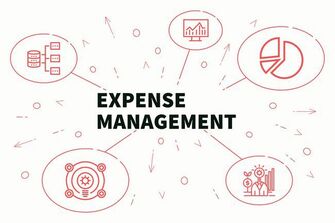In Pursuit of Profit
Read our expert article below or sign up to get articles sent to your inbox.
In fact, the adoption of technology seems to be quickening across the board among consulting accountants, for-profit companies, nonprofit organizations, and the government alike. (Yes, even the IRS is now using video visits to oversee tax preparers!) In an interview with Accounting Today Twyla Verhelst, head of the FreshBooks Accounting Partner Program, explained, I've heard it said that the last 30 years of technology and accounting have been taking what accountants used to do on paper and digitizing it. This is a very broad oversimplification of the advance of technology over 30 years, but I think there's some truth to it… Now, of late, we're starting to move away from that and move to creating new things based on what the technology can do as opposed to recreating what paper could do.  Call it what you want – cost cutting, cost containment, downsizing, cutbacks, or expense management. It all describes the same approach of reducing costs to weather an obstacle or downturn. In times of both slow decline and also rapid disruption we see companies go to the same well of pulling back on expenses. Some organizations may take a more surgical approach, carefully carving out smaller expenses from targeted areas to improve their overall financial health, while others may have a more knee-jerk reaction, slashing costs across all areas. But whether cuts are being done with a scalpel or a cleaver, expense management software has become the must-have tool for managing costs, especially while staffing challenges remain high. These days companies tend to implement expense management software for just that purpose – to help with reducing costs related to purchasing and processing reimbursements. And with only 54% of companies currently tracking the cost of processing expense reports, this has become an area ripe for cost reduction over the last year.  The last decade has ushered in a digital revolution across all business areas. However, many businesses are still dragging their feet when it comes to automating their accounting and finance activities. In fact, 58% of finance teams surveyed indicated that they do not feel their finance back office is “sufficiently automated.” Despite a plethora of tools and platforms available to help streamline these critical business areas, it seems many businesses are stuck in the past, relying on manual processes for their daily accounting functions. But organizations can use automation to drive profitability if they understand its benefits and can identify areas where AI will help them the most.  Automation improves ROI, enables scalability, increases collaboration, and develops organizational resiliency. And if that was not enough of a reason to go down the path of exploring your automation options, these days technology is cheaper, more robust, and easier to use than ever before. As a result, it is more ubiquitous across all industries, especially in technical professions like finance and accounting. CPA and technologist, Aaron Benson explains, “I think that technology has finally infiltrated every aspect of what we do within the profession, and to be competitive and to move forward, you have to use technology.” In his interview at the 2019 AICPA ENGAGE Conference he further goes on to explain, “Most people use like 20–30% of the software they [could] use and leave everything else on the table.”  It is undeniable that top business performance requires the right financial tools and resources. Having the right pieces in place provides better data and drives results. And while there are literally millions of online tools and apps and software programs for ecommerce companies to use, using the right financial tools can be the real differentiator between successful businesses and their competitors. So, what kinds of ecommerce financial tools are essential? Do you know how much time your company is spending on bookkeeping activities like accounts receivable (AR), accounts payable (AP), bank reconciliations, financial reporting, and reimbursements? Or are you of the opinion that it doesn’t matter as long as it is getting done? In many small companies these responsibilities fall to the business owners, adding another hat to the stack that they are already wearing. In these instances, it can be difficult to determine how much time is truly being spent on bookkeeping because it is being squeezed in throughout the day and week where there is room. However, until you know how much time you and your employees are spending on bookkeeping and accounting functions, you will not be able to do an effective cost-benefit analysis to determine if it makes more sense to outsource these activities. Additionally, knowing where you are spending your time means you will better be able to define the role you are looking to hire or outsource to get the right fit for your company, which works to improve employee retention – not just among financial staff, but among all employees. This kind of information can help determine whether you need a bookkeeper or an accountant and whether the role should be part-time or full-time. The solution is to use time tracking software to keep a log of which activities are being done when and how much time it takes to do them.
|
SUBSCRIBE:DOWNLOAD:DOWNLOAD:Categories:
All
Archives:
July 2024
|
Services |
Company |
|
7/25/2022